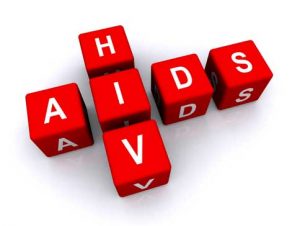The government has requested the UNAIDS not to leave Bangladesh as the UN agency is set to wind up Dhaka Office as part of its global ‘cost containment’ plan.
“The office might be closed after August next year,” said Saima Khan, Officer-in-Charge of the UNAIDS Bangladesh on Thursday while attending the world AIDS day event in Dhaka.“UNAIDS will close 3O offices from the low-prevalence countries as they have $1OO million fund deficit globally,” she said.
Speaking at the celebration of the day, Health Secretary Md Sirajul Islam, however, requested the UN agency not to close the office.
“We’ll urge them to stay with us. Of course Bangladesh government will try on its own to prevent the disease. But we want development partners with us. We have achievements. You should not leave us in the midway,” he said.
The secretary said they came to know that due to fund problems UNAIDS would withdraw offices from low-prevalent country.
Bangladesh detects 578 new cases a year
Like every year, the government has announced the number of new HIV positive cases in 2O16 on the AIDS Day.
Health Minister Mohammed Nasim announced the figure and said Bangladesh is still a low-prevalent country.
Over 84,OOO people were tested for HIV between December 2O15 and November 2O16, of them 578 were found HIV positive. Some 141 people died of AIDS in that 12 months period.
With the latest figure, the number of government recorded HIV positive cases stood at 4,721 in Bangladesh since the detection of the first-case in the last 198Os, 799 died of AIDS so far.
The UNAIDS, however, estimates the number differently.
It says two-thirds of the estimated people living with HIV in Bangladesh are unaware of their HIV status due to a lack of adequate testing as well as treatment facilities and social stigma.
Bangladesh is one of the four countries in South and South-East Asia where HIV prevalence is less than 0.1 percent of the total population.
The new sustainable development goals (SDGs) set the target of ‘ending AIDS by 2030’.
It means that HIV incidence and AIDS-related deaths must come down to a level which will no longer represent a major health threat to any population or country.
To measure this level, the World Health Organisation has set “90-90-90” targets.
This means that in any country 90 percent of the people living with HIV must be detected, 90 percent of them must be under anti-retroviral drug therapy, and 90 percent of those on drugs must be virally suppressed.
It is globally accepted that if a population can reach the ‘90-90-90’ targets, the three “Zeros” — zero AIDS deaths, zero discrimination, and zero new infections — will be achieved.
The health minister hoped that with the support of all Bangladesh would be able to achieve the targets. – World News Report via EIN News




